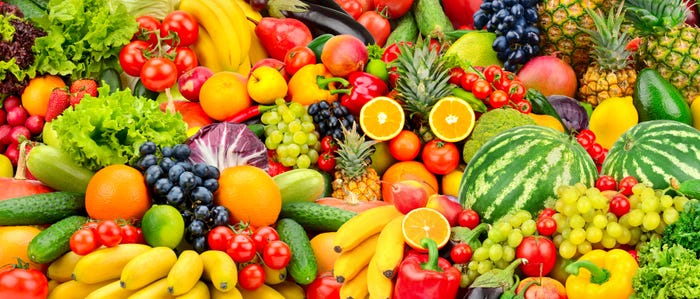Healthy Trends Report shows how consumers define healthy eating
For this new report, Datassential queried 3,000 consumers about their eating habits and what they consider healthy. See the results.
April 11, 2024

At a Glance
- Consumers prioritize healthy eating, but there’s no one-size-fits-all definition of “healthy.”
- Consumers are focused on increasing their intake of fruits, vegetables and other nutritious foods.
- Affordability, artificial ingredients and freshness are top concerns for healthy eating.
As part of its Simply Smarter Webinar series, Datassential dove into the findings of its latest “Healthy Trends Report 2024,” including health-related insights pulled from 3,000 consumers of the general population.
When consumers were asked to name the two most important elements of a healthy lifestyle, eating right (40%) was at the top of the list. More than half (57%) of consumers said they need to eat healthier.
Per Jack Li, executive chairman of board of directors at Datassential, that means big opportunity for the food and beverage industry.
“Ask people, ‘Hey, think of all the things you can do to be healthy,’ [and] eating is No. 1,” Li said during the webinar. “Think about the market size of that opportunity … it’s tremendous. This is a big gap that we can all fill in some way.”
The catch? Figuring out what “healthy” means to consumers when it comes to their food and diet. The findings showed 70% of consumers said that food that is healthy for some people may not be healthy for others.
“That opens up an interesting conversation: What is healthy food?” Gerald Oksanen, research and insights manager at Datassential, and author of the Healthy Keynote report, said during the webinar. “Consumers recognize that something that’s healthy for one person might not be for another person. That’s not only intriguing but poses somewhat of a challenge.”
Datassential's findings revealed what consumers consider healthy. For starters, the attributes that are most important when defining a food as healthy include vitamin/mineral content (54%), all natural (no artificial colors, flavors or preservatives, 50%), low sodium (49%), low sugar/sugar free (49%) and minimally processed (48%). Conversely, consumers are actively limiting sugar (45%), high fructose corn syrup (39%), sodium/salt (39%), fried foods (37%) and unhealthy fats (36%).

To improve their diets, consumers are most interested in increasing vegetables (37%) and fruits (35%). Superfoods (17%), whole grains (16%), legumes (15%) and nuts/seeds (14%) are some of the other foods consumers want to eat more of to improve their diets.
Dairy alternatives (8%), fermented foods (6%) and plant meats (4%) saw more modest interest.
“We should really bring more [fruits and vegetables] into products,” Li said of the findings. “There’s big, big demand.” Bringing fresh fruits and vegetables to market in new products at scale, however, is a “challenge,” he added, “but it seems like it’s a problem worth solving because there is real demand for that.”
The most popular diets consumers are practicing include a balanced/healthy diet (27%), reduced-sugar diet (25%) and reduced-sodium/salt diet (23%). In contrast, a very small percentage of consumers are following “trendier” diets like keto (4%), paleo (3%) and FODMAP (3%), according to Oksanen.
“I think that’s important just in terms of menu composition,” he said. “So, when you’re going to design your menu, it’s important if you’re catering to that healthy audience to be able to configure your offerings for that.”
When it comes to healthy eating, consumers are most concerned about the higher costs associated with healthy food (36%), artificial ingredients (35%), freshness (32%), excessive processing (28%) and preservatives (27%).

This piece originally appeared on Food & Beverage Insider, a New Hope Network sister website. Visit the site for information on ingredients, product development and regulatory issues.
You May Also Like


